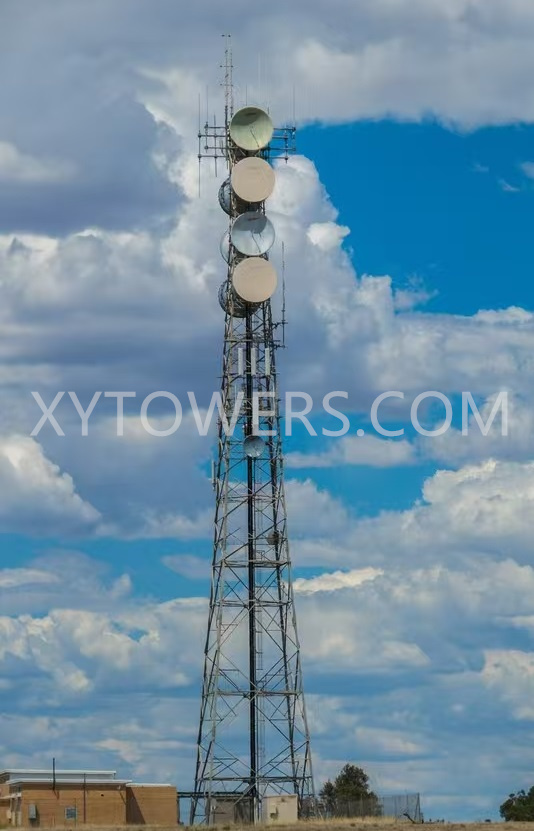
What is the fuction of comunication towers?
Communication tower, also known as signal transmission tower or signal mast, is an important facility for signal transmission. They mainly support signal transmission and provide support for signal transmission antennas. These towers play a vital role in telecommunications sectors such as mobile networks, telecommunications and global positioning systems (GPS). The following is a detailed introduction to the communication tower:
Definition: A communication tower is a tall steel structure and a type of signal transmission tower.
Function: Supports signal transmission, provides stability for signal transmission antennas, and ensures the normal operation of the wireless communication system.
The communication tower is composed of various steel components, including the tower body, platform, lightning rod, ladder, antenna bracket, etc., all of which have been hot-dip galvanized for anti-corrosion treatment. This design ensures the stability of the tower and prolongs its service life.
According to different uses and technical requirements, communication towers can be divided into various types such as self-supporting towers, self-supporting towers, antenna brackets, ring towers, and camouflaged towers.
Self-Supporting Tower: A self-supporting structure, usually made of steel, that is stable and suitable for a variety of environments.
Self-contained tower: lighter and more economical, often used in small and medium-sized communication systems, such as radio, microwave, micro base stations, etc.
Antenna Stand: A small stand mounted on a building, roof, or other elevated structure to support antennas, relay equipment, and micro base stations.
Ring Tower: A specially designed communications tower with a circular or ring-shaped structure, typically used for radio broadcast and television transmission.
Camouflage Tower: Designed to blend into the natural environment or resemble a man-made structure to minimize visual impact on the landscape.
Communication towers play a vital role in wireless communication networks. By increasing the height of the antenna, the service radius is expanded to provide wider signal coverage. With the continuous advancement of communication technology, communication towers are constantly being upgraded and transformed to meet new communication needs.
In recent years, with the promotion and application of new technologies such as 5G, the construction and renovation of communication towers have shown new trends. On the one hand, the height and density of communication towers continue to increase to meet users’ needs for high-speed and stable communication; on the other hand, communication towers are developing in the direction of multi-function and intelligence, such as upgrading “communication towers” to “digital towers” , providing a variety of new energy services such as charging, battery swapping, and backup power supply.
The construction and operation of communication towers face challenges such as difficult site selection, high construction costs, and difficult maintenance. Addressing these challenges requires joint efforts and support from the government, enterprises, and society. For example, the government can implement relevant policies and regulations to provide policy support for the construction and operation of communication towers; companies can increase technological innovation and R&D investment to improve the performance and efficiency of communication towers; all sectors of society can actively participate in the construction and maintenance of communication towers, Jointly promote the development of wireless communications.
Post time: Oct-15-2024





